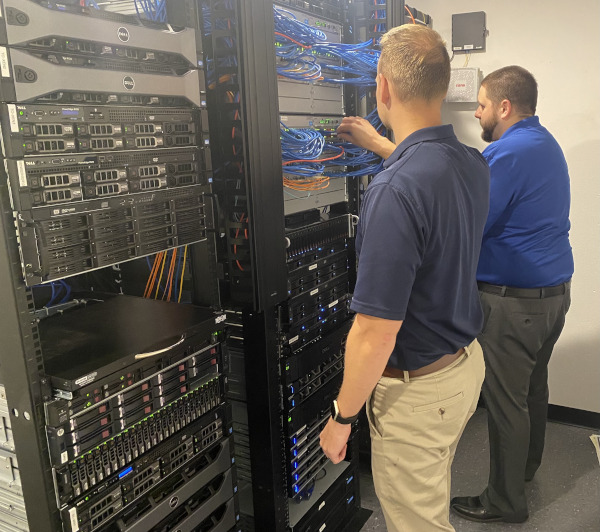 As K12 school technology staff prepare for the 2023-2024 school year, there are several summer technology projects that should be completed in order to ensure a successful start to the new school year. Updating legacy software and hardware, preparing for cybersecurity threats, and updating out of date cabling and wireless infrastructure are all important tasks that need to be tackled in order to ensure the safety and security of student data. Additionally, training on new technologies is essential in order for staff members to stay up-to-date on the latest developments in the field. By completing these projects over the summer months, K12 school technology staff can ensure a smooth transition into the new school year.
As K12 school technology staff prepare for the 2023-2024 school year, there are several summer technology projects that should be completed in order to ensure a successful start to the new school year. Updating legacy software and hardware, preparing for cybersecurity threats, and updating out of date cabling and wireless infrastructure are all important tasks that need to be tackled in order to ensure the safety and security of student data. Additionally, training on new technologies is essential in order for staff members to stay up-to-date on the latest developments in the field. By completing these projects over the summer months, K12 school technology staff can ensure a smooth transition into the new school year.
By taking on these top 5 technology projects, school technicians can make sure their schools are always up-to-date with the latest technology advancements and ensure their school district is ready for School Technology success in 2023-2024.
Network Closet Remodel and Clean Up
As a school technician, it is important to stay up-to-date with the latest technology projects. Updating a cluttered network closet, labeling wires, routing cables to the correct length, adding fiber optics for faster speeds and replacing switches are all essential tasks that should be undertaken by any school technician.
These projects are essential for ensuring that the school's network runs smoothly and efficiently. Additionally, they can help reduce costs associated with maintenance and repairs as well as improve safety and security measures. Cleaning up your network closet will also ensure that you can track down problems much faster during the busy school year.
Implement Multi-factor Authentication
With the fall school year quickly approaching, it is important for schools to ensure that their staff are able to access their accounts securely. Implementing multi-factor authentication (MFA) and two-factor authentication (2FA) can help protect school staff from cyber threats when they come back in the fall. MFA and 2FA will add an extra layer of security on top of passwords, making it more difficult for hackers to gain access to sensitive information. Additionally, these measures can also help protect staff from phishing attacks and other malicious activities. By implementing MFA and 2FA, schools can ensure that their staff are better protected against potential threats.
Install software patches and updates
With the increasing number of cyber threats, it is important to ensure that all computers in school are up to date with the latest software and security patches. This is especially true for legacy operating systems and software that are more vulnerable to security issues.
Installing important updates and security patches on school computers is essential for protecting students from potential cyber-attacks. It also ensures that the school's network remains secure from malicious actors who may try to exploit outdated software or operating systems.
Updating legacy operating systems and installing security patches on school computers can be a time-consuming process, but it is necessary in order to avoid any potential security problems with legacy software. By taking proactive steps during summer months when there are less people, schools can ensure their students are safe from cyber threats while they use their computers for educational purposes.
Update your school Wi-Fi
With the rise of remote learning and online work, schools are struggling to keep up with the demand for reliable wireless networks. Too many users, older technology, and an over taxed network can lead to slow speeds and unreliable connections. To ensure fast speeds and reliable access for all users, it’s important to upgrade your wireless network. Newer technologies can help alleviate the strain on your system while providing faster speeds for all users. Upgrading your network can also help you stay ahead of the competition in terms of speed and reliability.
As the number of wireless users continues to grow, it is important for schools to have a proper density of wireless access points that can handle the capacity and accept more users connecting to the network. This is especially true in densely populated areas such as airports, stadiums, and other public places. Having enough access points will ensure that all wireless users can get fast and reliable internet connections without any interruption or buffering. With proper density, districts can also benefit from increased student and staff satisfaction as they are able to provide a better user experience for all users.
Physically Clean Computers and School Technology
School computers are used heavily and often need to be physically cleaned in order to keep them running at their best. Dust and dirt can accumulate over time, leading to a decrease in performance due to clogged fans, vents, and other components. Germs get on the computer’s surface which can cause health issues for students. To prevent these issues from occurring, it is important for schools to regularly blow out their computers and wipe them down with a disinfectant. Doing so will help ensure that the computers are performing as expected and free of any germs or dirt.
We hope this list is helpful for School Superintendents and Technology Staff. Midwest Computech is here to help if you have questions or need assistance knocking out your summer technology projects.


